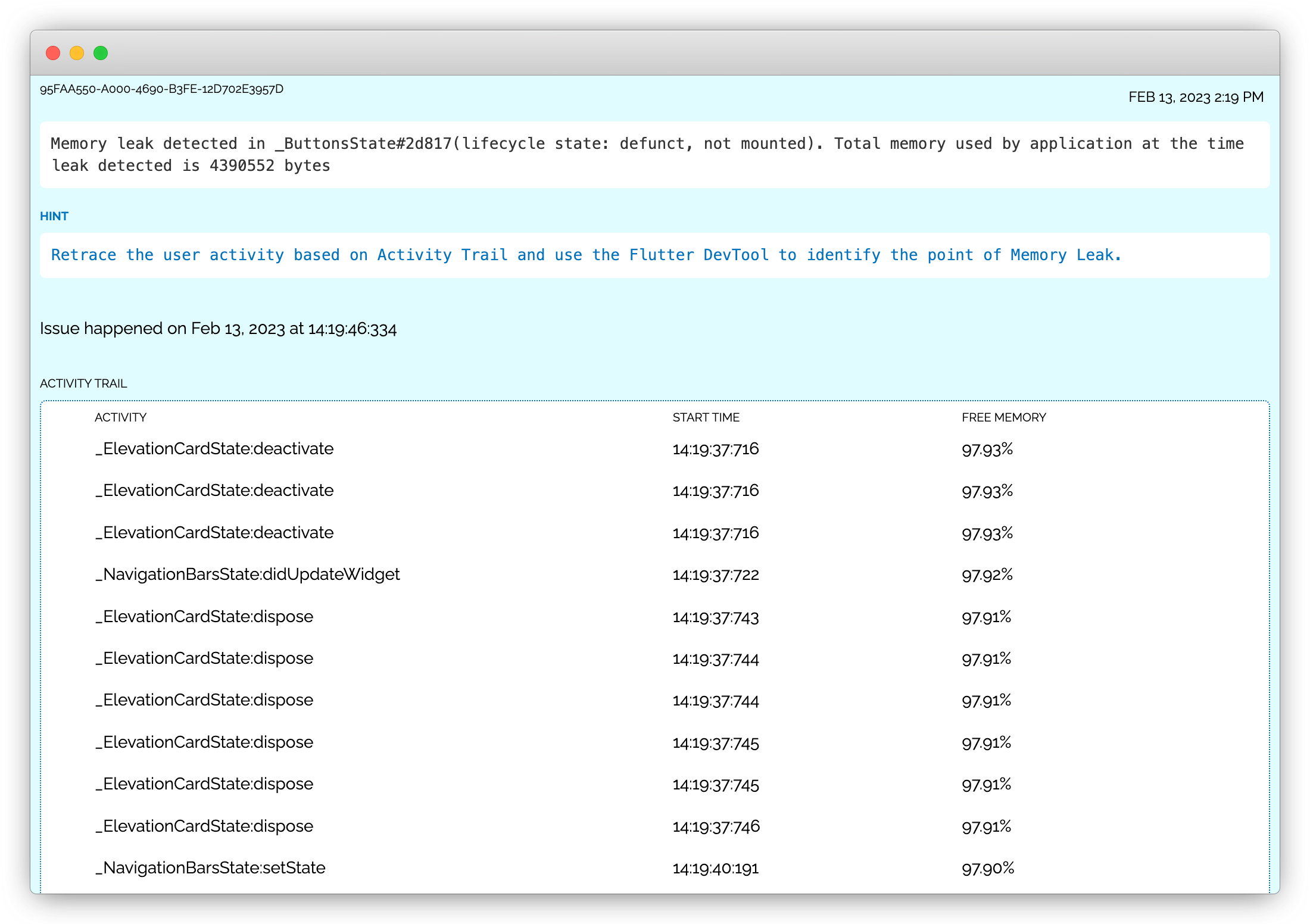Detecting and fixing Memory Leaks in Flutter apps in Release mode.


In the context of Flutter applications, a memory leak is a programming problem that occurs when the application continues to hold onto memory resources that are no longer needed, causing the application to consume an increasing amount of memory over time. This continual increase in memory usage is detrimental to the application's performance, and if not addressed, can lead to significant performance degradation, or in severe cases, can cause the application to crash entirely.
Memory leaks in Flutter applications have the potential to substantially impact the user experience negatively. As the application's memory consumption increases, its performance tends to degrade. This degradation can manifest in numerous ways, such as slower response times, longer loading times, increased lag, and in extreme cases, frequent application crashes. Such behavior can frustrate users, hinder the usability of the app, and ultimately deter users from continuing to use the app.
While it is the responsibility of developers to ensure that their applications do not have memory leaks, they can be particularly challenging to identify and resolve due to their often subtle and gradual impact. Regardless, it is crucial for the smooth operation and the overall success of the app that such issues are addressed in a timely manner.
There are several reasons that can lead to memory leaks in Flutter applications.
One of the primary reasons is the incorrect management of object references. This typically happens when an object is not properly released when it is no longer needed by the application. It might be that the object is still being referenced somewhere in the code, preventing the garbage collector from reclaiming the memory, thus causing a memory leak.
Improper use of static variables is another common cause of memory leaks. Static variables have a lifecycle that spans the entire duration of the application, which means they do not get garbage collected until the application is shut down. If these static variables hold references to other objects, these objects too will remain in memory, potentially causing memory leaks if they are not required anymore but are still being held onto because of the static reference.
Another common cause of memory leaks is the use of too many resources without properly releasing them when they are no longer needed. This is particularly prevalent with resources such as bitmaps, cursors, or file streams. These resources can consume a significant amount of memory and if not properly managed, can easily lead to memory leaks.
All these issues can lead to an increase in memory consumption over time, causing performance issues and potentially crashing the application.
The issue report provides the name of the State class where the leak occurred, along with an activity trail.
The activity trail is a chronologically ordered list of events that took place prior to this issue. This allows developers to trace the sequence of events leading up to the memory leak.
By following this activity trail, developers can use the Flutter dev tools to pinpoint the exact object causing the leak.